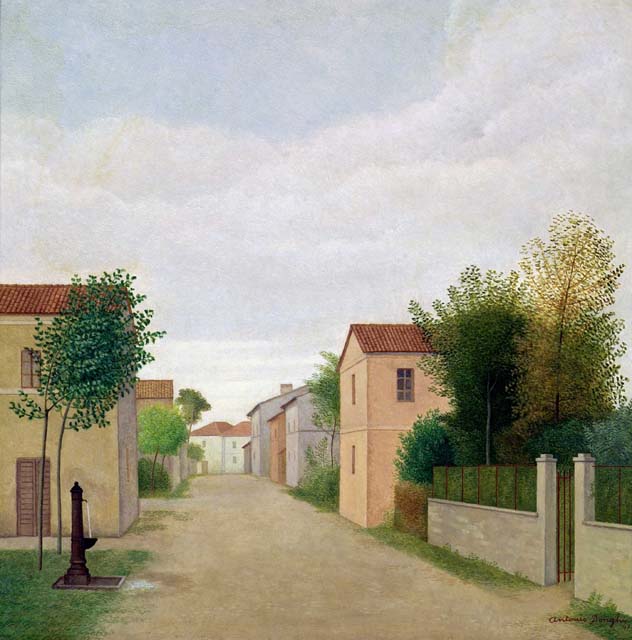1953: The National Exhibition of Contemporary Italian Painting
In November 1950 the University of Trieste inaugurated its new headquarters, the work of Umberto Nordio. In a climate filled with resentments and hopes for the changed political situation, a season full of international meetings and appealing initiatives opened, culminating in the National Exhibition of Contemporary Italian Painting.
In the spring of 1953, in fact, the idea of an exhibition of contemporary art began to take shape, thanks to the initiative of Rector Rodolfo Ambrosino, which in that year could take on a particularly relevant visibility at the national level, given that neither the Venice Biennial nor the Rome Quadrennial would take place.
The Rector was joined in the venture by Luigi Coletti, founder of the Athenaeum's chair of art history, and Superintendent Benedetto Civiletti.
The event had a twofold purpose: political and didactic. The first goal was to draw attention to the Trieste problem, and to its Italian-ness, and was achieved by calling exclusively Italian artists who could endow the university with works of national appeal; the second goal was didactic: there was an intention to educate the public in the understanding of modern art. There was also an underlying, and more prosaic, one: to beautify the new, unfinished building with the best available artistic evidence.
Seventy-five exhibitors participated in the event, including many well-known names, such as: Vedova, Rosai, de Pisis, Perizi, Casorati and Leonor Fini. The Group of Eight, founded in 1952 and promoted by critic Lionello Venturi, was fully present and included Afro Basaldella, Birolli, Corpora, Moreni, Morlotti, Santomaso, Turcato and Vedova. Also on view were works from various painting currents, primarily Impressionist, present in the largest number, followed by Expressionist, Abstractionist, Tonalist, Neorealist and Surrealist works.
The exhibition took place in the Aula Magna between December 1953 and January 1954. Sixty-six paintings and nine drawings were exhibited.
The exhibition included the crowning of two winners who would be awarded two prizes purchased by the jury (composed, in addition to Ambrosino, Coletti and Civiletti, of 3 experts appointed by the exhibitors: Giulio Carlo Argan, Giuseppe Marchiori and Marcello Mascherini).
First prize was awarded to Giuseppe Santomaso, with the painting Cantiere; second place went to Afro Basaldella, with Ricordo d'infanzia. The prize reserved for the artist from Venezia Giulia was won by Nino Perizi with his Homage to Garcia Lorca.
Thanks also to an incisive media action, the exhibition was a great success with critics and the public, and there were more than 9000 visitors. About 2,000 of these were given a questionnaire, which decreed the public's liking for the paintings Viso by Leonor Fini and Dino Predonzani's Destroyed Cathedral.
The bold idea of exhibiting works difficult for the general public to understand was accompanied by plans for a course in modern art criticism, but this never took place.
Of all the works exhibited only 38 were acquired by the University, 30 paintings and 8 drawings. These over the years were destined for the furnishing of lecturers' studios and only in recent years were relocated to the premises of the Rector's Office to form a full-fledged picture gallery.
In 2008 the works were displayed in the exhibition 1953. Italy Was Already Here. Contemporary Italian Painting in Trieste, which was held at the Civic Museum Revoltella in Trieste.
Bibliography
More links

